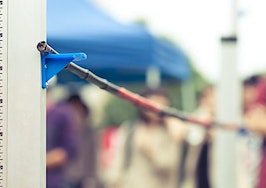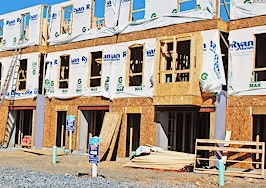- Builder confidence rose two points to a reading of 60 in August.
When builders are confident in their business, it’s a good sign that the housing market is booming and they have plenty of incentive to keep creating new inventory. And for 30 years, the National Association of Home Builders and Wells Fargo has measured this sentiment among builders of new single-family homes on a monthly basis.
So how is August faring? According to the NAHB/Wells Fargo Housing Market Index (HMI) released today, builder confidence rose slightly to 60. This is compared to July’s downwardly revised reading of 58, which originally was reported as 59.
“New construction and new home sales are on the rise in most areas of the country, and this is helping to boost builder sentiment,” said NAHB Chairman Ed Brady, a home builder and developer from Bloomington, Illinois.
“Builder confidence remains solid in the aftermath of weak GDP reports that were offset by positive job growth in July,” said NAHB Chief Economist Robert Dietz. “Historically low mortgage rates, increased household formations and a firming labor market will help keep housing on an upward path during the rest of the year.”
The HMI is the composite measure of three components, two of which posted gains this month: current sales conditions (rose two points to 65) and sales expectations (rose one point to 67). Buyer traffic, the third measurement, fell one point to 44.
Regional HMI scores saw a bit more movement than last month:
- The South registered a two-point uptick to 63
- The Northeast rose two points to 41
- The West was unchanged at 69
- The Midwest dropped two points to 55
Every month, the NAHB surveys its members; it asks builders to gauge perceptions of current single-family home sales and sales expectations for the next six months as “good,” “fair” or “poor.” Builders are also asked to rate traffic of prospective buyers as “high to very high,” “average” or “low to very low.” The NAHB and Wells Fargo takes these scores and calculates its seasonally adjusted index. A number over 50 indicates that more builders view conditions as good than poor; a number under 50 indicates that more builders view conditions as poor than good.












